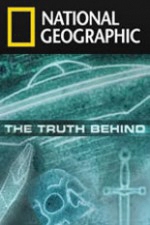 "The Truth Behind"
"The Truth Behind"
National Geographic (Story House Productions, 2013— )
If asked to guess what one of the most popular shows on Netflix is, few of us would think that National Geographic’s series The Truth Behind sits on that list. The hour-long show unravels mysteries of the world such as the devil’s Bible and Noah’s Ark. This could say something wonderful about American television viewers; it could say we are hungry for information. Unfortunately, the show serves up some sloppy science.
Take, for example, an episode that explores the Dead Sea Scrolls. The documentary employs archaeologists and theologians whose sole purpose seems to be negating the last speaker. While this sounds like good science—a free exchange of ideas and the opportunity to argue points of contention—the way it is presented on the show feels more like a televised version of the National Enquirer.
In the Dead Sea Scrolls episode, a dramatic voice-over says, “In a ritual that seems to foreshadow the teachings of John the Baptist, the scroll writers used sacred waters to spiritually cleanse themselves. And at Qumran, we can see the remains of an elaborate water system that channeled rainwater from the cliffs into a series of pools.” This, the voice-over tells us, is the “most common interpretation of the Qumran site.” (Insert pause for overly dramatic effect.) “But it is not the only one.” The next five minutes debunk the previous five minutes, while the voice-over peppers the conversation with phrases like “All we can say for certain . . .” and “We will never know if this is true.”
Instead of science, The Truth Behind gives viewers speculation and a titillating inflation of what feels like thousand-year-old gossip. While exploring history can be an uncertain business, other shows do a far better job covering the same material. If you want to be entertained and informed, stick with Nova or Cosmos. Let’s say something better about ourselves as American viewers with what we watch.
This review appeared in the May 2015 issue of U.S. Catholic (Vol. 80, No. 5, page 42).












Add comment